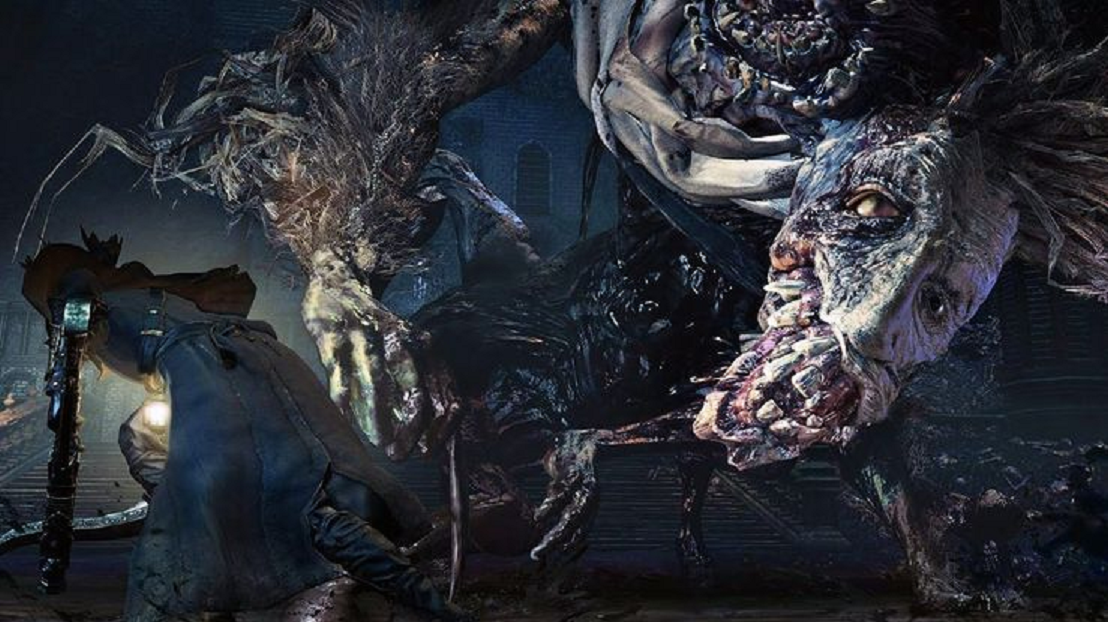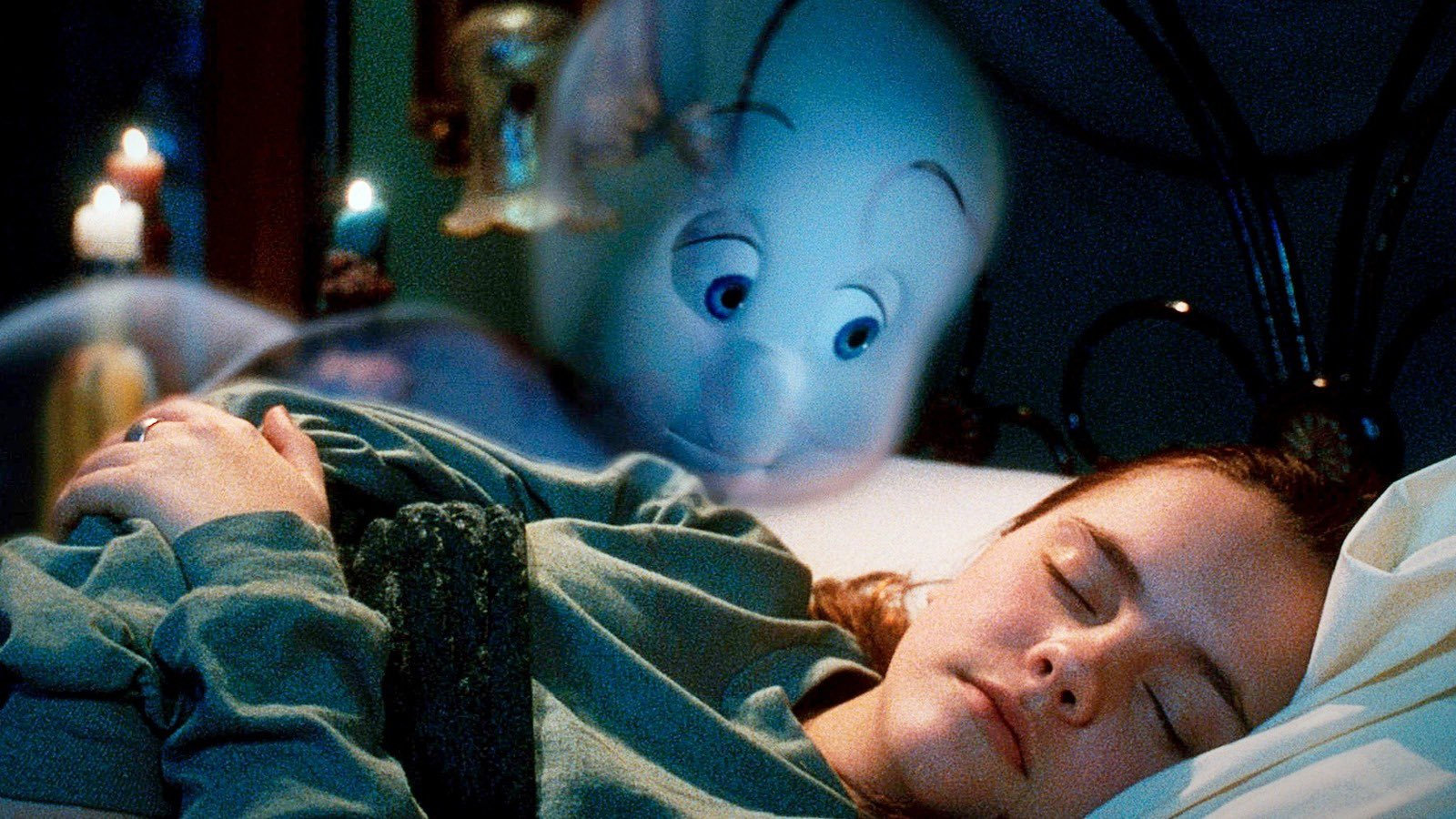Editorials
How ‘Bloodborne’ Does Lovecraftian Cosmic Horror Right

The very first note in Bloodborne reads, “Seek the Paleblood to transcend the hunt.” Given the fact that hulking beasts roam the dreary Victorian streets, most people fixate on the hunt portion of that note. While this is representative of a lot of the experience of Bloodborne, it’s the word “transcend” that clues you in to the game’s true nature: a Lovecraftian tale of mankind experimenting with forbidden knowledge. Could they have shown their hand from the beginning and still drawn people in? Probably, but discovering this twist is such a wonderful feeling that’s integral to the experience, as well as being in line with the structure of many of Lovecraft’s stories.
There’s a distinct point in the game where the story starts to take a turn. In the beginning, it seems to be about a simple plague that turns villagers into violent creatures. You hunt them through the streets and into the woods until you stumble upon Byrgenwerth. Here you find even stranger creatures: a giant centipede-scorpion hybrid, a human-fly with a bulbous head covered in eyes and students seemingly melting into a puddle of goo.
The most jarring part of Byrgenwerth is the boss fight with Rom, The Vacuous Spider. After exploring the school and finding the head scholar immobile on a balcony, you dive off and transport into a brightly-lit lake that goes on forever. It’s a stunning image that contrasts harshly with the dimly-lit city and night-drenched forest you’ve been traversing thus far. When Rom shows up, she’s almost sad. Her giant body rolls around trying to attack while summoning meteors from the heavens and sending smaller spiderlings after you. It’s not the most fun boss fight in the game, but it is the first one that gives you the sense that there is something grander, more cosmic going on in Yharnam than you’re led to believe.

The phrase “eyes on the inside” becomes an important one to understanding the story of Bloodborne. In the fiction, it’s a colloquial way of talking about the game mechanic of insight (in-sight, get it?) and refers to being able to understand the incomprehensible nature of the universe. Much like in the work of Lovecraft, there is always something lurking just beyond our perception that would drive a normal person mad to discover. This knowledge is being researched by several parties throughout the game, all who have conflicting ideas about how to elevate mankind to their next stage of existence.
Eyes are an important symbol with a lot of the enemies and can help say a lot about the creature’s relationship with arcane knowledge. For example, the Witch of Hemwick takes the eye metaphor literally, removing eyes with a hooked tool, theoretically in an attempt to gain knowledge. Similarly, the description of the Accursed Brew item mentions the practice of forcibly searching the inside of a skull for eyes.
The Insight stat itself doesn’t seem to have any impact on the game early on. Some actions use it as a currency, but there are other more subtle things that it does as it goes up. The lanterns held by the Church Servants are revealed to be covered with glowing eyes, Mad Ones spawn in specific locations, and the giant Amygdalas show up hanging from the buildings in Yharnham. While it’s not called a “Sanity Meter” like in so many other games, it manages to capture the concept in a more Lovecraftian manner than other games.

One especially Lovecraftian enemy in the game is the Winter Lantern, which will cause your Frenzy Meter, another variant on sanity, to raise just by looking at it. So many Lovecraft protagonists end up losing their minds just by gazing upon some inhuman horror, making this the perfect type of monster for the theme. The more Insight your character has, the quicker a Winter Lantern will raise your Frenzy, reinforcing an idea of the genre: knowledge of the forbidden is dangerous.
My favorite part about Bloodborne is that while it explores all of these very Lovecraft-influenced ideas, it does so without using the mythology. Sure, there are lots of tentacled creatures or the occasional fish-man, but it never uses Cthulhu proper, despite the fact that it’s public domain and could have been used. In creating its own mythology, it’s able to explore the ideas of cosmic horror in its own ways that don’t come with the baggage of Lovecraft, making it so much more unique.

By not telling us about the cosmic horror story from the get-go, it gave players the experience of a Lovecraft protagonist’s, slowly unraveling mysteries around them while losing more of their mind in the process. This melds perfectly with the storytelling of the Souls games, forcing you to actively hunt down and piece together the information yourself. It’s the perfect combination of theme and genre, and while I don’t think I’d ever need to see an explicit sequel, I would love to see From Software do something similar again.

Editorials
6 Other Public Domain Characters That Deserve Horror Movies

From Pinocchio’s Revenge to Silent Night, Deadly Night, taking beloved cultural icons and turning them into cold-blooded killers is nothing new in horror. I mean, corrupting traditionally innocent iconography is pretty much the genre’s specialty, but I still find it fascinating how modern filmmakers are fighting back against franchise monopolies by re-imagining popular figures like Winnie the Pooh and Mickey Mouse as murderous monsters as soon as they enter the public domain.
And with the announcement that the Winnie the Pooh: Blood & Honey team’s “Twisted Childhood Universe” is expanding to include evil versions of characters like Bambi and Peter Pan, I think it’s time that filmmakers start looking at some less obvious source material when coming up with their public domain scares. With that in mind, we’ve decided to highlight six public domain characters that also deserve their own horror movies. After all, if these genre subversions are here to stay, they might as well get creative with it.
For the purposes of this list, we’ll be avoiding public domain creations that were already meant to be a part of the horror genre at the time of their creation – which means no entries derived from classic writers like Poe, Lovecraft and Shelley.
With that out of the way, don’t forget to comment below with your own public domain favorites if you think we missed a character that’s especially suited for big-screen terror.
Now, onto the list…
6. Felix the Cat – Feline Follies (1919)

Felix may not have the same star power as some of his animated contemporaries (mostly due to the fact that his most popular cartoons were from the silent era), but this mischievous black cat is still responsible for developing the general blueprint for nearly all animated mascots to come. At one point, Felix was so big that he even co-starred alongside a 2D Charlie Chaplin in one of his landmark shorts, making him one of Australia’s biggest celebrities.
And while it’d be easy to take the anthropomorphic mutant animal approach like many of the recent public domain horror adaptations, I think a Felix horror movie would work best as a meta slasher. In this more down-to-earth story, a Felix-obsessed fan could dress up as the iconic cat and commit feline-themed murders following the insane logic of those silent-era cartoons.
5. Jack Frost – Oral Tradition

You can’t exactly copyright winter, and while the most notable iterations of Jack Frost are off limits (i.e. Rankin/Bass’ 1979 TV Special and 2012’s Rise of the Guardians), the idea of a living, breathing embodiment of freezing cold is very much available for any genre filmmaker wishing to tell an effects-driven tale of icy terror.
I think a supernatural horror approach would work well with this one, having a group of youngsters offend the wintery spirit and fall victim to his wrath in increasingly bizarre deaths. Hell, you could even make the whole thing take place during a blizzard and trap the main characters inside a single location in order to make filming easier.
And before you say, “but Luiz, wasn’t there already a Jack Frost horror flick back in 1997?”… that movie is actually about a serial killer who turns into a mutant snow-man – not the living embodiment of winter!
4. Mowgli – The Jungle Book (1894)

While most people are only familiar with Disney’s loose adaptation of the book from 1967, Rudyard Kipling’s original Jungle Book is actually a collection of stories following the feral boy Mowgli and his encounters with beasts representing different human archetypes. The original tales were deeply allegorical yarns about laws and society (with some scholars even arguing that the text contains some problematic imperialist tendencies), but I think the horror genre could especially benefit from Kipling’s jungle-borne thrills.
After all, evil children are a timeless staple of the horror genre, so imagine a scary story about a feral child who can communicate with animals and vengefully unleashes them on the humans who “rescued” him from his natural home. Think The Beastmaster but with more jump-scares!
3. Sherlock Holmes – A Study in Scarlet (1887)

One of the most popular fictional characters of all time, it baffles me that we’ve yet to see a fully fledged horror film about Arthur Conan Doyle’s iconic detective, Sherlock Holmes. Sure, we’ve had glimpses of terror in stories like The Hound of the Baskervilles, but where’s my supernatural thriller about Holmes and Watson facing a Cthulhu death cult hell-bent on ending the world?
There are already several literary crossovers pitting the world’s favorite detective against the eldritch horrors of H.P. Lovecraft (courtesy of authors like James Lovegrove and even Neil Gaiman), so why not bring these conflicts of madness and reason to the big screen?
2. Gertie – Gertie the Dinosaur (1914)

One of the more obscure entries on this list, Gertie the Dinosaur was the main attraction in a pioneering example of cinematic mixed media. A 12-minute animated short accompanied by a vaudeville act, this silent film introduced the world to a “wonderfully trained dinosaur” who would eat out of the hands of trainers and perform goofy tricks alongside live-action performers – all this decades before movies like Who Framed Roger Rabbit.
And while Gertie’s extraordinary popularity has mostly been lost to time, I’d love to see a full-on monster movie about an exotic wild animal reaching its breaking point after one trick too many and going on a destructive rampage a la the tragic real-life story of Tyke the elephant.
1. Casper the Friendly Ghost – The Friendly Ghost (1945)

Casper the Friendly Ghost isn’t exactly an A-lister cartoon character these days, with few notable projects involving the cutesy spectre since 1995’s divisive film adaptation (which, as a 90s kid, I happen to love despite its many flaws). However, I think Casper is a prime candidate for a terrifying reinvention due to the fact that his first animated appearance never had its copyright notice renewed.
While this means that only 1945’s The Friendly Ghost is technically up for grabs (which doesn’t even feature the character’s iconic uncles), there’s still no shortage of horrific subversions that filmmakers could come up with when telling a chilling story about a lonely child’s spirit wandering the world of the living in search of company.













You must be logged in to post a comment.